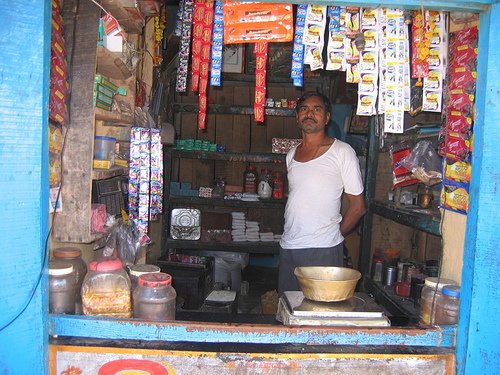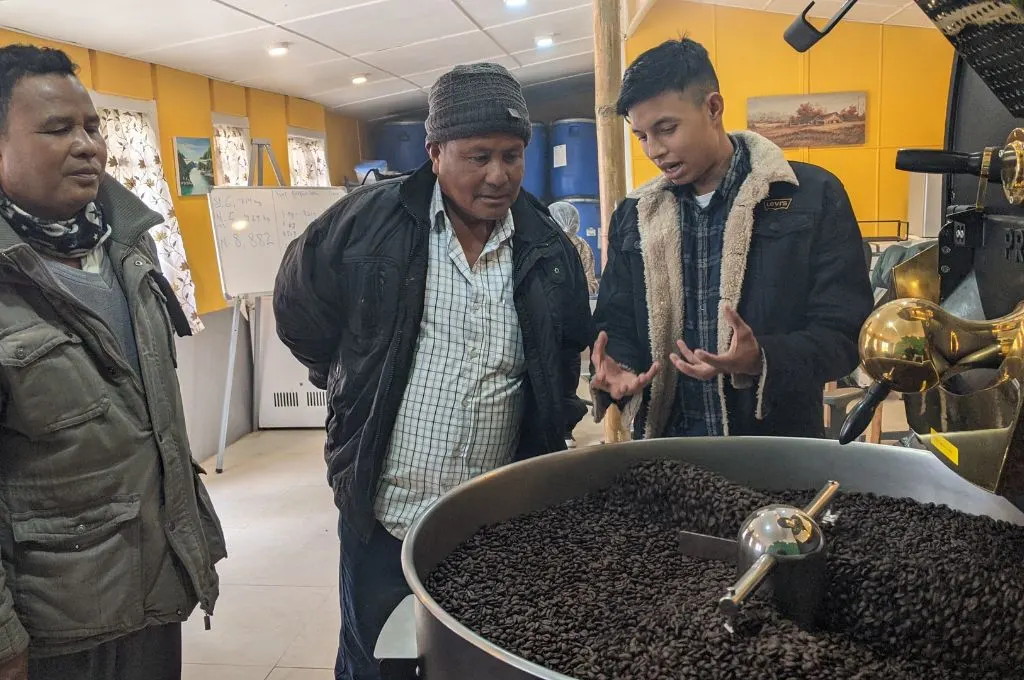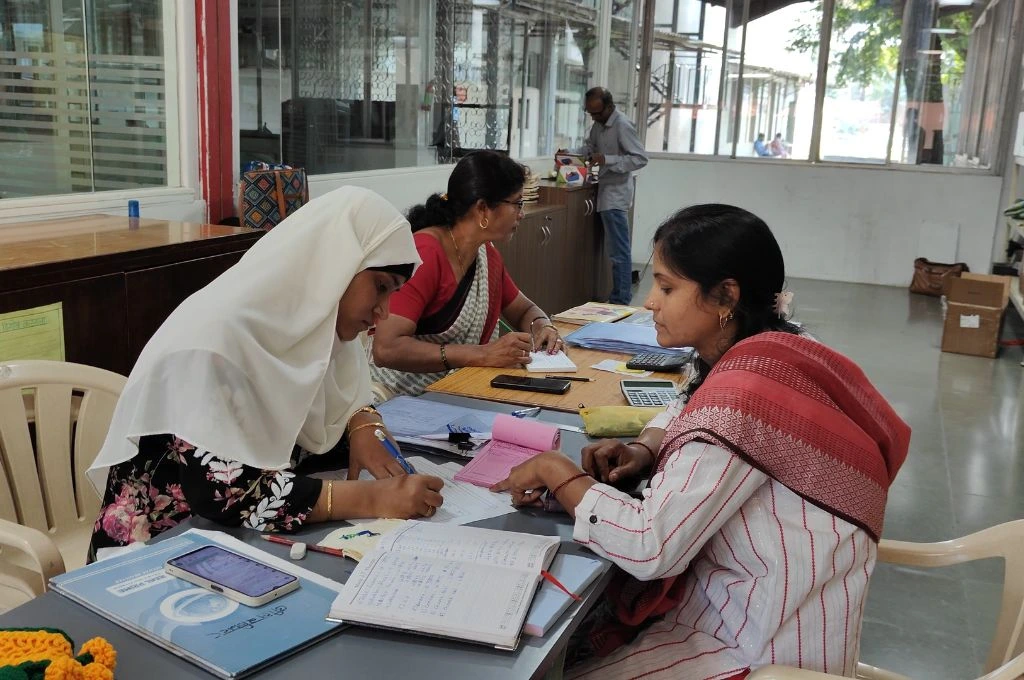In most developing countries, governments and private enterprises continue to grapple with the problem of finding ways to reach people who are geographically cut off from basic infrastructure and distribution channels. This is a real problem that social businesses must address as they seek to serve the base-of-the-pyramid (BOP) customer while also becoming financially sustainable. In India, we are seeing some unique examples of creativity at work as businesses make strategic choices in their pursuit of the last-mile consumer.
Leveraging local networks seems to be one way that Indian social enterprises across sectors are reaching last-mile customers.
Partnering locally
Leveraging local networks seems to be one way that Indian social enterprises across sectors are reaching last-mile customers. The Delhi-based Simpa Networks, a rural off-grid solar energy supplier, employs this strategy to bring affordable and clean energy to villages.
Less than 5% of India uses solar energy today, with most rural communities relying, instead, on kerosene lanterns, candles and batteries–all of which provide dim lighting at best. The task at hand for Simpa is to convince customers that its low-cost products offer an effective, reliable and low-risk solution.

It has partnered with local village-level entrepreneurs (VLEs) called Urja Mitras (energy buddies), recruited from target villages, to take this solution to the consumers. These VLEs, generally influencers in their local communities—shop owners, teachers, religious leaders or commercial sales agents—are critical to building trust in consumer’s minds for Simpa’s technology. They receive product training and marketing support, and now have a new source of income that incentivises them to spread solar energy in their communities.
Bhoomee, the Bengaluru-based agricultural enterprise, uses rural touch points or ‘kendras’ as a key component of its operations as it serves a network of over 150,000 farmers. It provides farmers with real-time market information on crops and harvest supply (through an online portal and call centres), and connects them with traders. Like Simpa, Bhoomee invests in building a local labour force comprising VLEs who help sell its information services to farmers. Expanding this rural network continues to be instrumental to building Bhoomee’s overall operations and marketing to last-mile rural farmers, as first-time users tend to be sceptical about the technology working on a real-time basis.
While both ventures seem to have cracked the last-mile challenge by tapping into local sales networks, building such a salesforce requires attention in two areas:
- Training: Given that local agents may not be on the company’s payroll, a rigorous training and standardisation programme is important so they know how to sell the product and provide after-sales services.
- Incentivisation: It is critical to develop incentive structures that keep the salesforce motivated and ensure that sales behaviour is aligned to the company’s key objectives. This helps prevent incorrect sales practices and maintains pricing discipline.

This file is licensed under the Creative Commons Attribution-Share Alike 3.0 Unported license
Using trusted distribution channels
Kirana stores or point-of-sale shops are another key channel to reach the BoP customer. Historically, kirana stores have been leveraged for distribution largely by the FMCG and telecom sectors: for example, Unilever’s shampoo sachets and Airtel’s top-up phone cards in rural India.
These initiatives have been successful largely because they have used the kirana store as a channel to capitalise on the existing purchasing behaviour of their consumers. Partnerships between distributors and kirana stores as last-mile agents are a win-win, particularly as they enable the store to increase its product and service offering.

Related article: What social businesses are getting wrong
More recently, last-mile payment players such as Oxigen, Eko and Suvidhaa have turned to kirana stores, not just for distributing products, but also services such as remittances and the purchase of railway tickets. Likewise, Frontier Markets and Essmart in Rajasthan and Tamil Nadu use kirana stores to distribute clean-tech and durable goods products such as solar lanterns, clean cook-stoves and solar fans.
Despite this model’s viability, working through kirana stores comes with its own set of problems such as ensuring continuous monitoring of the stores’ performance, which can prove difficult, especially with scale. Managing after-sales and maintenance services on products—processes that are typically overseen by trained personnel on company payroll—can also be challenging. Further, as kirana stores are typically excluded from the formal credit system, they require informal trade credit from their suppliers or distributors to be able to manage working capital cycles. This means social enterprises must extend credit to kirana stores and manage pricing and credit accordingly, which can be tricky if repayment depends upon customer demand cycles for particular products.
Technology for scale
For social enterprises operating across many branches and local distribution networks, it is important to invest in technology platforms that can support growth. While social enterprises are typically wary of building ‘owned and operated’ branch offices–the related opex costs can be quite significant–the fusion of technology and last-mile distribution can create a potent combination for penetrating underserved communities in a highly controlled manner.
Cultural norms can present barriers to delivering a service using technology.
These technology-enabled tools can enhance the productivity of the sales force and the regular data monitoring can help boost efficiency to reach operational targets.
For example, a geo-location mobile app can enable accurate customer information to be available ‘on the fly’ for field agents, with functionality to sort, filter and view different types of data at a customer level. By capturing geo-location data, it can create a rich dataset for optimising the travel routes of field agents and identifying local selling points. It can also enable capturing of customer photos and key financial and social impact data.
Serving the last-mile customer at scale also exposes some of the limitations posed by technology: rural areas often have irregular connectivity; contexts and digital literacy rates vary widely; and the solution may require customisation based on the local language. At times, cultural norms can present barriers to delivering a service using technology versus traditional relationship-building with customers through the sales channel.
Ultimately, social enterprises operating in the rural context need to think hard about developing last-mile distribution networks–these can be sales or partner-led, as well as technology-enabled. Such platforms should directly enable product and service providers to penetrate new markets, achieve lower acquisition costs and effectively convert sales leads into long-term customers.




